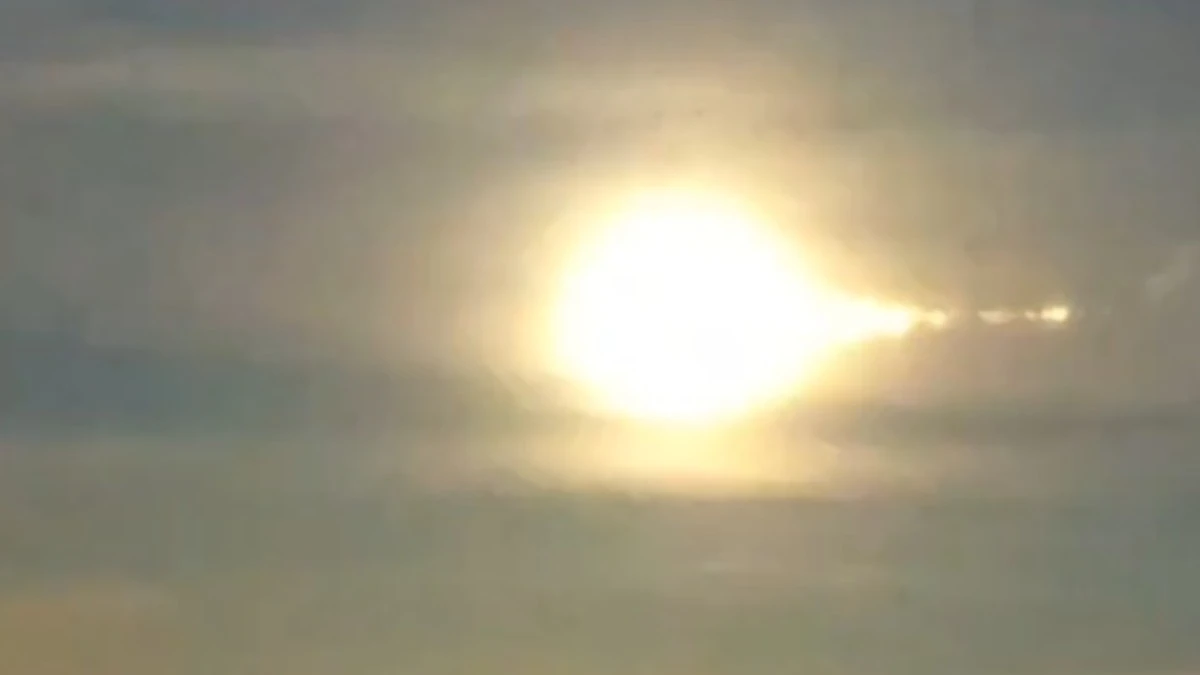A bright green bolide, a natural meteoroid entering Earth’s atmosphere, illuminated the skies over Moscow, Russia, at around 00:30 UTC on October 27, 2025. The object produced several bright flashes and visible fragmentation as it moved across the sky, leaving a persistent trail. Analysis of multiple videos confirms its natural origin, distinguishing it from any satellite or rocket re-entry.
A bright green bolide illuminated the skies over Moscow and nearby towns, including Vidnoye, Dubna, and Ramenskoye, in the early hours of October 27.
The object moved slowly across the sky, producing several intense flashes and a clearly visible trail that persisted for several seconds before fading. Witnesses captured the event from multiple angles, showing a compact bright head followed by luminous fragments consistent with atmospheric breakup.
The available footage and observational data indicate a natural meteoroid entering Earth’s atmosphere, rather than a re-entering artificial object as some observers suggested.
The green coloration is typical of magnesium and nickel-bearing meteoroids burning at high velocity, while the brief duration and abrupt terminal flash differ from the prolonged multi-minute decays of satellite debris.
The absence of any matching orbital re-entries in official public listings from the Aerospace Corporation and US Space-Track, as well as the lack of regional warnings or tracking notices from Russian space-surveillance networks, further supports natural origin.
The fireball appeared at approximately 00:30 UTC (03:30 local time). No sonic booms or ground impacts were reported, suggesting disintegration at high altitude between roughly 25 and 35 (15–22 miles).
The event coincided with the active period of the Southern Taurids meteor stream, which is known for producing slow, bright fireballs in late October and early November. The apparent velocity and color characteristics correspond well with Taurid-type meteoroids traveling at about 28 km/s (17 mps).
Footage shows multiple short flares along the trajectory, indicating successive fragmentations as the meteoroid encountered increasing aerodynamic stress. The luminous trail faded within seconds, leaving a faint residual glow that dispersed in the upper atmosphere.
In addition, no records from Russian or international authorities list any artificial object expected to re-enter over European Russia at that time. Both global and regional orbital-tracking bulletins contain no scheduled decays or uncontrolled re-entries for the Moscow latitude band during the October 27 window. In combination with the observed morphology and brief duration, this effectively rules out space debris as a source.
Today’s bolide over Moscow ranks among the brightest confirmed over the region in recent years and adds to the growing record of slow, green fireballs documented during the late-October meteor streams.
Further confirmation from radar or spectroscopic data may refine its exact trajectory and composition, but current evidence firmly identifies the object as a natural bolide of celestial origin.

